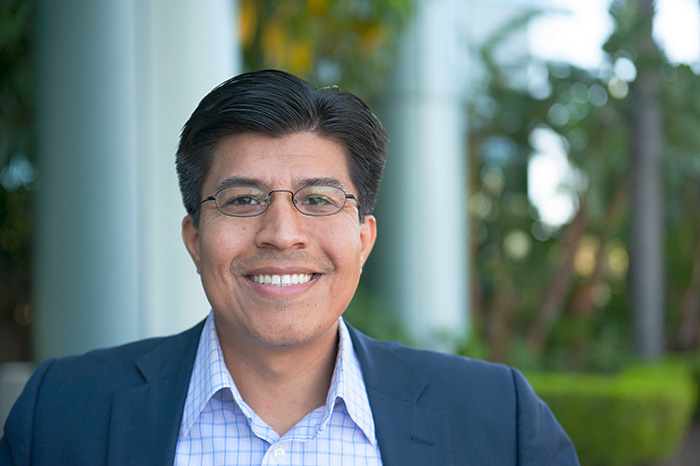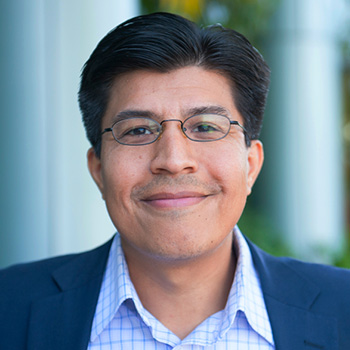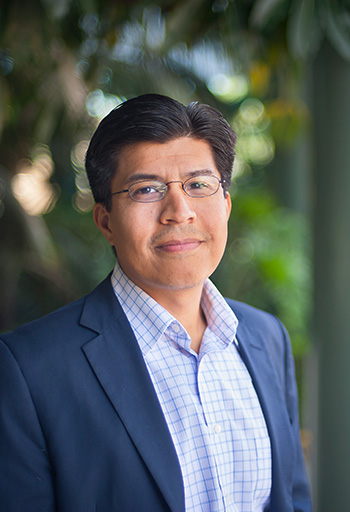Helping clients ‘choreograph’ their financial future

Proactive Advisor Magazine: Joshua, what motivates you in your role as a financial advisor?
It all starts with my fundamental belief that the average, hard-working American doesn’t get the same kind of attention from the financial community that a high-net-worth individual does. And the average small- or mid-sized business generally does not have access to the kind of professional guidance a Fortune 500 company does. I think the average person and most smaller businesses are left with few options related to financial services.
I have made this a focus of my business, trying to serve segments that can really use high-quality guidance. About 15 years ago, I was in the process of making a career change from the human resources and professional staffing field. I met with individuals from Transamerica Financial Advisors, Inc., and their focus on working with everyday clients and businesses resonated with me. The real benefit I saw was that a wide variety of products and services could be delivered to this audience to help meet their needs. I feel fortunate to have found a firm that shares my outlook, and my work as an advisor has been very gratifying.
What kinds of clients do you generally work with?
I think everyone deserves the chance to get good financial guidance. My clients range across the spectrum in terms of age and demographics, but they are primarily middle-class individuals or the owners of small businesses. I have a lot of ties to the Latino community in my area, and roughly 40% of my clients are Latinos. Some of my clients are much like my parents: good providers for their families who have saved some money but have generally not had much in the way of formal financial education and guidance.
“The one overriding objective that I stress for each client is building in some form of downside protection for their portfolio.”
I always tell people that I am a financial advisor by title, but in practice I am an educator and financial coach. My priorities are in guiding people to protect their money, and then focus on growing their assets for retirement. In the end, I want to help people make their lives better now and in the future.

I believe that my background in human resources is a tremendous asset in dealing with people. Money issues, health issues, and family issues are all very personal topics. Many people have had circumstances that have been upsetting, or they have not always made the right decisions, or they might just be very hesitant about opening up to an advisor. I think I have the ability to be both a good listener and someone who can deliver guidance.
 Talk about your process.
Talk about your process.
It starts with a very informal conversation where we try to get to know each other and see if there is common ground to go forward in a working relationship. I believe it’s important to not only work with people you trust, but also with people you like. It makes for a better experience. I emphasize to people that whether we formally work together or not, I am more than happy to hear their circumstances and help them in any way I possibly can.
I try to gather all of the facts I can about their financial situation and their feelings about savings, money, investing, and protecting their future. Who are they? Where are they from, and what are their backgrounds? Why do they have a desire to have this conversation at this point in time? Is there a change in lifestyle or job circumstances or family situation? Have they received an inheritance or otherwise come into new money? What do they like to do in their spare time? What sorts of assets and coverages do they have in place, what kind of debt do they have, and what does their household budgeting look like? What are their goals and dreams for the future?
Once I have this total picture, we move more into the formal planning process, including developing a risk profile. I try and keep things in a real-life context and explain the planning process broadly as having three buckets for deploying assets or savings. The first bucket covers a client or client couple’s day-to-day living expenses and budgeting. Whether they are in retirement or not, they will still have those monthly bills to pay. These funds should be in very liquid assets.
The second bucket covers intermediate-term needs, from having adequate emergency funds to saving toward a goal such as a new home or funding college education. The third bucket is essentially the retirement bucket, which is where the planning piece becomes extremely important. We will look at a number of potential solutions for each client, all dependent on their specific risk profile, lifestyle needs in the future, sources of income, and assets.
Let’s focus on the third bucket for retirement planning. How do you approach investment planning there?
We really have very few constraints and can develop a customized solution for each client. It might be a passive investment portfolio, an actively managed portfolio, or some layering in of fixed indexed strategies through annuities. It could be some combination of all of the above. The one overriding objective that I stress for each client is building in some form of downside protection for their portfolio. For some people, having the comfort of a steady, reliable stream of income in retirement makes annuities an attractive option. For others, especially those more interested in asset growth over a longer time frame, I am a proponent of a fairly strong allocation to actively managed strategies.
My definition of active management is that it is a proactive approach to investing versus a passive approach. There are many ways to implement that and various types of strategies. Different managers use different indicators or models: some might be based on major macroeconomic indicators, and others could be based more on trends, using algorithms and price trends in the market. Strategies may also have the ability to go inverse the market if signals are trending to the negative side, or they could go to cash. There are also some very interesting bond strategies based on trends in interest rates. I generally use multiple managers and multiple strategies. Different strategies may work much better than others during various market conditions, and I think that diversification is very important.
My interest in active management really took hold during the 2008–2009 period. When you see the kinds of losses the market can inflict during a period of severe stress like that, it made little sense to me to have client portfolios remain static. Several senior advisors I was working with had been fairly early adopters of an actively managed approach, and I learned a lot from them. We were able to make some adjustments to portfolios that helped prevent some of the worse drawdowns. Going forward after that, I was determined to place greater emphasis on downside protection in recommending strategic allocations for clients. Evaluating and selecting third-party managers who are very experienced at developing these strategies has become an important part of my approach in working with clients.
How do you explain active management to clients?
It comes back to education. Even though these may be very sophisticated strategies, the theory behind the overall approach is fairly simple and makes common sense. It is far easier for a client to build their assets over time if he or she can avoid periods of large drawdowns. I explain the math around that in some easy-to-understand examples.
I also will ask a new client to share their experiences with their portfolios during the credit crisis. How did their portfolios literally do and how did they feel about going through that experience? For most people, it was a feeling of helplessness as they took big losses to their hard-earned money. I can then show them an illustration of how an actively managed approach did during that same period and over various other time periods. This is based on actual results of real strategies that have been employed by some of our managers for more than 10 years. It is a very impressive demonstration of the power of active management.
The key point I want to leave with people, however, is that their investment needs are specific to them. There are many factors to consider when building a portfolio approach, and the way we work is not one size fits all. It depends on a client’s attitude toward risk, their objectives, and their plans for the future. Equally important is setting mutual expectations with clients. A risk-managed approach is generally not going to be one that generates market-beating returns during strong bull markets. But over time it is going to be a much smoother experience for clients. We think this way of approaching investment planning should help clients to stay on track in meeting their goals.
 Joshua Hernandez is an investment advisor representative with Transamerica Financial Advisors, Inc., located in Orange County, California. Mr. Hernandez has over 13 years of experience in the financial services industry and is “very proud” of his track record for client retention. He also has been an active recruiter and coach for individuals entering the business.
Joshua Hernandez is an investment advisor representative with Transamerica Financial Advisors, Inc., located in Orange County, California. Mr. Hernandez has over 13 years of experience in the financial services industry and is “very proud” of his track record for client retention. He also has been an active recruiter and coach for individuals entering the business.
Mr. Hernandez was born and raised in California. He is bilingual and works with an English- and Spanish-speaking client base, which includes individuals and small businesses. He received his degree in computer science. Mr. Hernandez developed a deep interest in training and development and spent more than a decade in positions related to human resources, recruitment, training, and professional staffing.
Mr. Hernandez has a wide variety of interests and describes himself as a “high-level networker.” He is passionate about public speaking, personal coaching, and self-improvement training, and attends many events related to these areas. He is also “an enthusiastic fan of salsa dancing” and can be frequently found on the dance floor in his spare time. Mr. Hernandez is involved with the Toastmasters organization, where he has won recognition for his speaking skills, and is a youth mentor and public-speaking coach for teens in his area.
Disclosure: Joshua Hernandez is a Registered Representative and an Investment Advisor Representative with Transamerica Financial Advisors, Inc. (TFA). Securities and Investment Advisory Services offered through TFA, member FINRA, SIPC, and a Registered Investment Advisor. TFA 2175272-0718.
Photography by Ed Carreon


